The Art of Car Photography
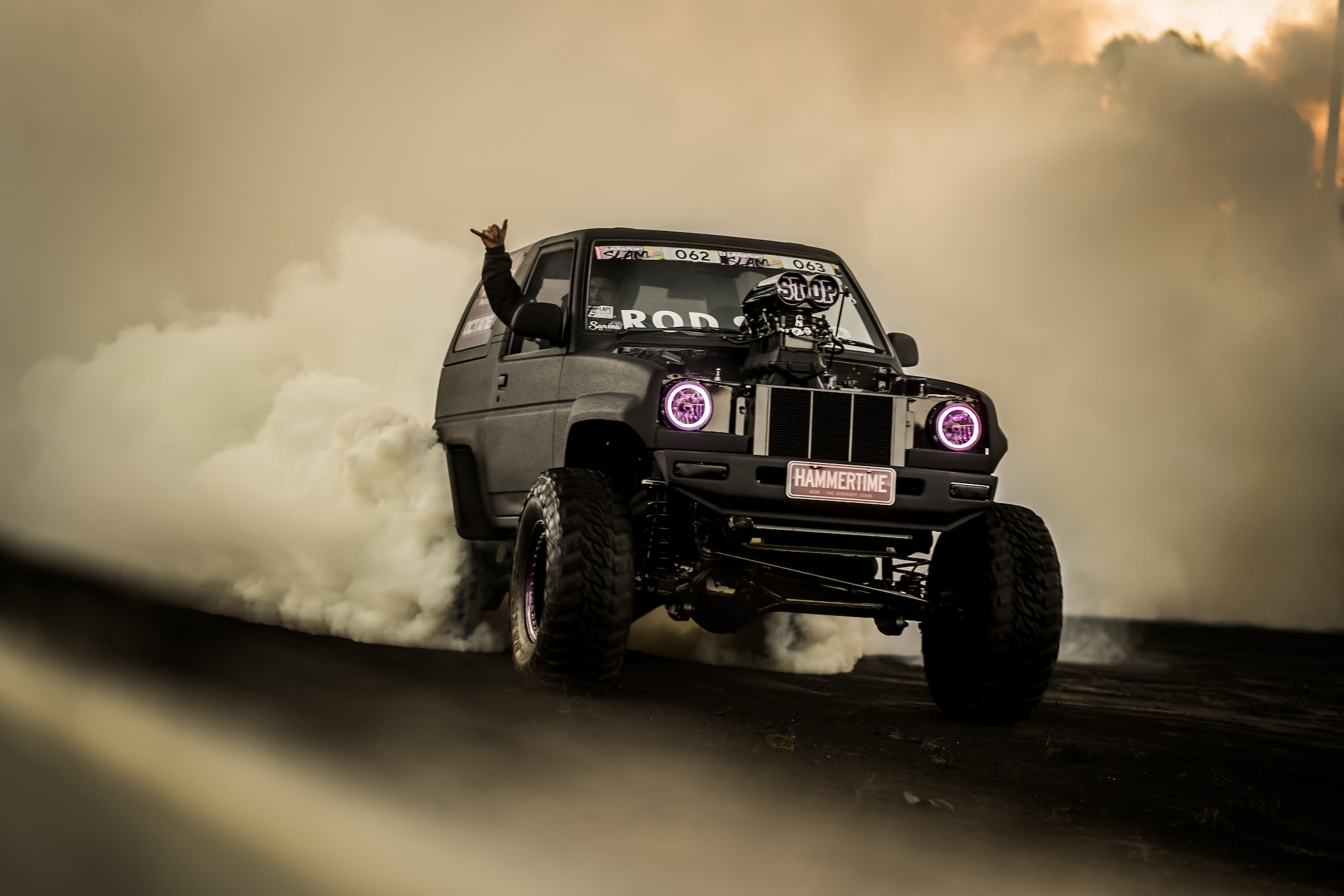
The importance of car photography in the automotive world cannot be overstated. From providing visual content for marketing campaigns and automotive journalism to creating stunning art pieces that celebrate the beauty and design of automobiles, capturing stunning car images serves a myriad of purposes. This essay delves into the tips and techniques for achieving exceptional car photographs in various settings, featuring insights from professional car photographers.
Featured Car Photographer: Scott Durnell
In the world of automotive photography, Scott Durnell from Torque Media stands out as a skilled and passionate photographer, known for capturing vivid and unique action shots of cars at burnout events across the country. In May 2023, Performance Garage had the opportunity to chat with Scott and dive into his journey, his photography tips for beginners, and even explore what he has hidden in his garage.
Scott has been involved in photography for quite some time. After exploring film photography during his university days, he took a hiatus for about five years. However, his passion for capturing moments through the lens reignited ten years ago, leading him to establish Torque Media. This year marks a significant milestone as he celebrates a decade in the industry.
When it comes to the gear he uses, Scott transitioned from shooting on a Canon DSLR body to a Sony a few years ago. Currently, he relies on the Sony A7 Mark IV, praising its lightweight design and speed. As a photographer covering fast-paced events like drag racing and burnouts, Scott finds the mirrorless feature of the Sony camera to be a game-changer.
Among the various car shows Scott has photographed, Brashernats holds a special place in his heart. Despite its chaotic nature and long hours, the high caliber of cars and the sense of community at the event make it truly memorable. For Scott, it's like a family reunion with fellow car enthusiasts.
With his extensive portfolio in burnout photography, we were curious to know the challenges he faces during these events. Scott highlighted the ever-changing lighting conditions as a constant hurdle. The smoke and the shifting sun can dramatically alter the atmosphere, requiring him to adapt quickly. And of course, there's the occasional encounter with flying debris that keeps him on his toes.
As for the durability of his camera equipment in the intense burnout environment, Scott ensures thorough cleaning after each event. While the gear may acquire a scratch or dent here and there, they generally withstand the demanding conditions. It's worth noting that Scott has opted for darker-colored lenses, avoiding the pristine white ones that tend to show wear and tear more prominently.
While spectators may only see the final edited photos, Scott shared insights into his post-event workflow. He prides himself on being swift in editing individual standout shots, often prioritizing a hero image to share during the event itself. However, curating and editing the full gallery may take a few days to ensure the best results.
When it comes to advice for aspiring photographers, Scott emphasizes the importance of practice. While having quality gear is often a topic of discussion, he believes that consistent practice and honing one's skills are key. Scott also encourages photographers to invest in lenses as they significantly contribute to image quality, regardless of the camera body used.
Beyond his photography prowess, Scott is also a car enthusiast. Currently, he still has his VE wagon, which he has lovingly built up over the years. However, he plans to pass it on to a new owner soon. His latest project is a 1980 Chevy C10, which he envisions transforming into the ultimate streeter, complete with a bagged suspension, LS swap, eye-catching paintwork, and other custom touches.
We extend our gratitude to Scott Durnell for taking the time to share his insights. If you happen to spot him capturing moments on the burnout pad, be sure to give him a wave and make sure to check out his exceptional work that truly captures the essence of automotive excitement.
For more details about Scott Durnell and his impressive automotive photography, read the full article on here.
The Evolution of Car Photography
Car photography has a rich history, intertwined with the development of automobiles and photographic technology. This journey has seen significant milestones and innovations, shaping the way we capture and appreciate cars today.
The Early Days
The early days of car photography can be traced back to the late 19th and early 20th centuries when automobiles first emerged as symbols of luxury, status, and innovation. The limited technology and film available at the time resulted in black-and-white images, often featuring cars as part of elaborate scenes or advertisements.
During this period, photographers primarily relied on large-format cameras and glass plates, which required longer exposure times and produced images with a limited tonal range. As a result, early car photographs were often static and focused more on the car's presence in the frame rather than the dynamic qualities we associate with modern car photography.
Mid-20th Century Innovations
The mid-20th century saw significant advancements in camera technology and film, enabling photographers to experiment with new techniques and styles. The introduction of 35mm film and SLR cameras provided increased flexibility, faster shutter speeds, and improved image quality. Colour film, in particular, allowed photographers to capture the vibrant hues and intricate details of automobiles, further enhancing the visual appeal of car photography.
During this period, car photographers started exploring motion and action in their images, with iconic car races such as Le Mans and Formula 1 providing the perfect backdrop for capturing speed and drama. The rise of automotive journalism and advertising also contributed to the growing popularity and artistic development of car photography.
The Digital Revolution
The advent of digital cameras in the late 20th and early 21st centuries marked a new era in car photography. The ability to shoot, edit, and share images digitally opened up new creative possibilities and dramatically increased the accessibility of car photography for enthusiasts and professionals alike.
High-resolution sensors, rapid autofocus systems, and advanced image stabilisation technology enabled photographers to capture cars in stunning detail, with vibrant colours and dynamic motion. Additionally, the widespread availability of powerful editing software, such as Adobe Lightroom and Photoshop, allowed photographers to refine their images and develop unique styles further.
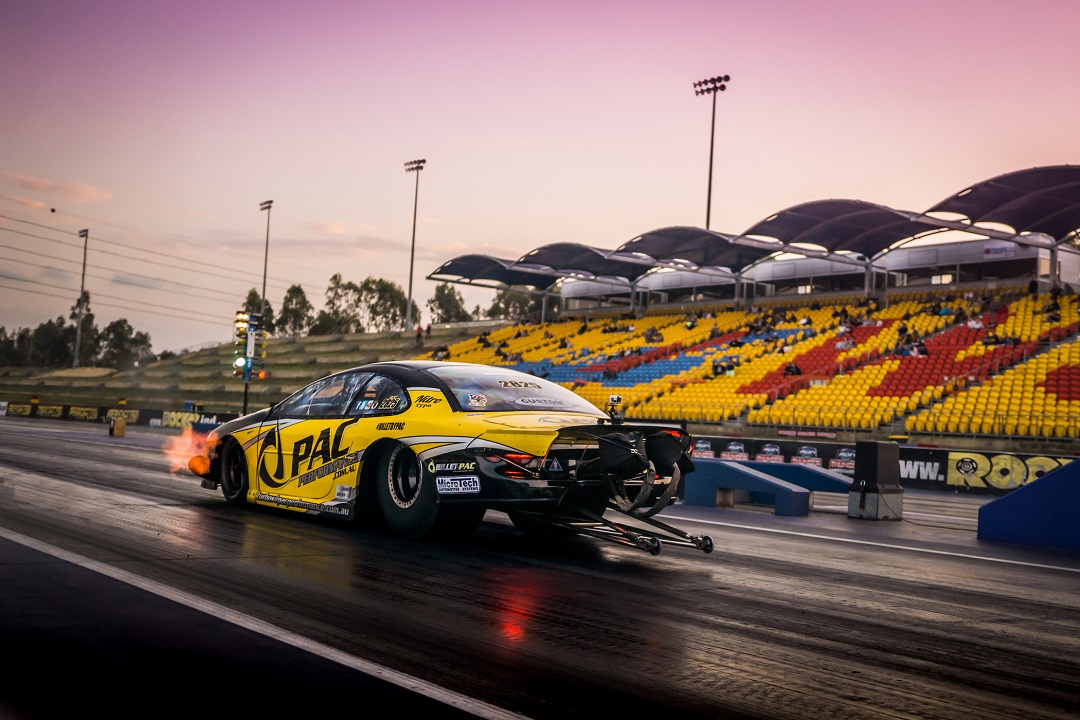
The Impact of Drones and Social Media
More recently, drone technology and social media platforms have profoundly influenced the world of car photography. Drones have provided car photographers with new perspectives and creative opportunities, capturing aerial shots that were once only possible with helicopters or other expensive equipment.
Social media platforms, such as Instagram and Facebook, have enabled photographers to showcase their work to a global audience and connect with like-minded enthusiasts and potential clients. These platforms have also encouraged the rapid exchange of ideas and inspiration, pushing the boundaries of car photography and fostering a vibrant community of photographers.
Looking Ahead
As we look to the future, emerging technologies, such as virtual reality, augmented reality, and advanced computational photography, will continue to shape the evolution of car photography. Moreover, as the automotive landscape shifts towards electric and autonomous vehicles, car photographers will need to adapt their techniques and approach to remain innovative and relevant in this ever-changing field.
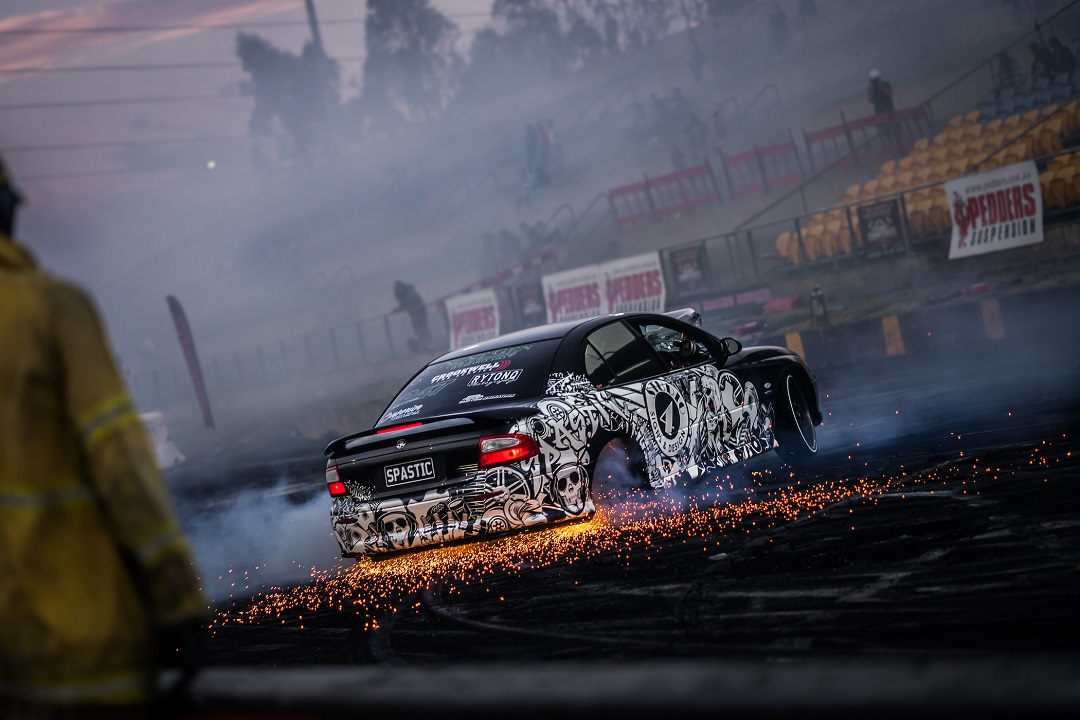
Fundamentals of Photography
To master car photography, one must first grasp basic photography concepts and terms, such as exposure, aperture, and shutter speed. Exposure is the amount of light that reaches the camera sensor, while aperture determines the size of the opening in the lens, and shutter speed dictates the duration of the exposure. Understanding these concepts will help you achieve proper exposure, sharpness, and depth of field in your car photographs.
The Right Equipment
Choosing the right camera and lenses is crucial for capturing stunning car images. A versatile DSLR or mirrorless camera with a selection of prime and zoom lenses will provide flexibility and quality. Essential accessories include tripods for stability, polarising filters to reduce glare and enhance colours, and a camera remote to eliminate camera shake.
Planning and Preparation
Scouting locations and setting the scene are vital steps in car photography. Consider the car's design, the desired mood, and the background when choosing a location. Time your shoots during the golden hour (just after sunrise or before sunset) or the blue hour (before sunrise or after sunset) to take advantage of the soft, warm, and diffused light.
Car Preparation and Presentation
The way a car is presented can significantly impact the quality of your photographs. Proper car preparation and presentation ensure that your images showcase the vehicle in its best light, highlighting its unique features and design elements. The following steps will guide you through the process of preparing and presenting a car for a successful photoshoot.
Cleaning the Exterior
Before any shoot, it's essential to clean the car thoroughly, as even the smallest specks of dirt or dust can be distracting in a photograph. Start by washing the car using the two-bucket method, which involves one bucket of clean water for rinsing your wash mitt and another with soapy water for washing the car. This approach helps prevent scratching the car's paintwork.

After washing, dry the car using a soft, microfibre towel or a dedicated car dryer to avoid water spots. Pay special attention to panel gaps, door handles, and other areas where water can accumulate.
Detailing the Car
Once the car is clean and dry, take the time to detail it further to enhance its appearance. Use a clay bar to remove any remaining contaminants from the paintwork, followed by a high-quality car wax or sealant to give the paint a glossy, reflective finish.
Don't forget about the wheels – ensure they are clean and free of brake dust, and consider applying a tyre dressing to make the rubber appear darker and more uniform.
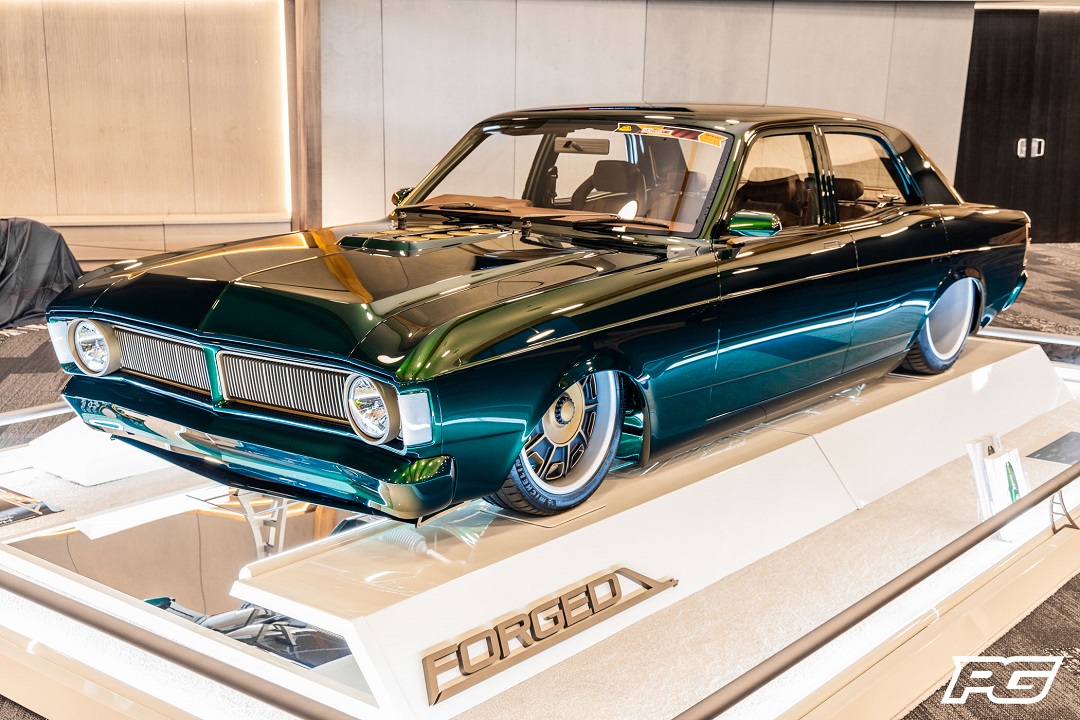
Polishing Glass and Trim
Clean and polished glass and trim are crucial for achieving professional-looking car photographs. Use a dedicated glass cleaner and a microfibre cloth to clean all glass surfaces, including windows, mirrors, and light lenses. For trim, use a trim restorer or protectant to enhance the appearance of any plastic or rubber components, such as grilles, window seals, and bumper inserts.
Preparing the Interior
A well-prepared interior can elevate your interior photographs and create a cohesive overall presentation. Start by vacuuming the interior, including the seats, floor mats, and any crevices. Use appropriate cleaning products for the specific materials inside the car, such as leather cleaner for leather seats and an all-purpose cleaner for plastics and vinyl.
Remove any clutter or personal items from the car, and ensure the dashboard is free of dust. Pay attention to small details, such as polishing the steering wheel emblem or ensuring air vents are aligned symmetrically.
Positioning the Car
The way a car is positioned in a photograph can dramatically affect how its features are showcased. Experiment with different angles to find the most flattering shots – some cars may look best from a low, front-three-quarter angle, while others may benefit from a higher vantage point.
Consider the direction of the light when positioning the car, and try to avoid harsh shadows or glare on the paintwork. If possible, rotate the wheels to show off the rims and create a more dynamic appearance.
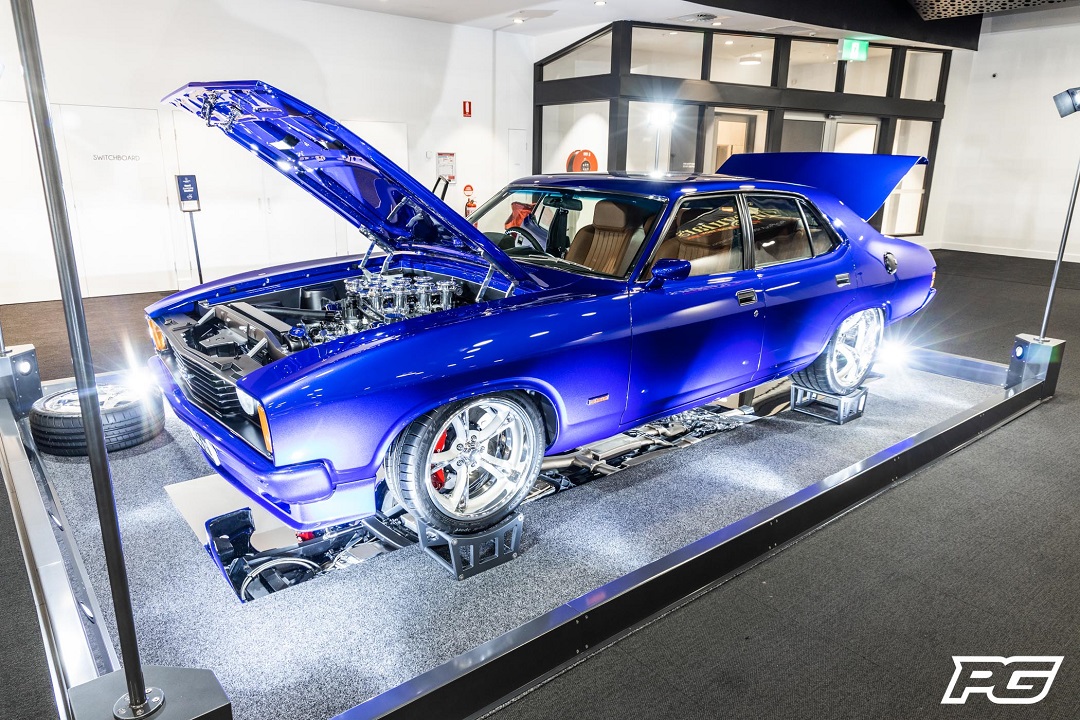
Adjusting Mirrors and Panels
Small adjustments to mirrors and panels can make a significant difference in the final image. Ensure that mirrors are symmetrical and angled correctly to avoid distracting reflections. If you're photographing a convertible, decide whether the roof should be up or down, as this can dramatically alter the car's profile and overall aesthetic.
By investing time and effort into car preparation and presentation, you'll create a strong foundation for capturing stunning car photographs that showcase the vehicle's unique features and design elements
Composition Techniques
The rule of thirds, leading lines, perspective, symmetry, and framing are essential composition techniques in car photography. These guidelines help create visually pleasing and balanced images that draw the viewer's attention to the car and its unique features.
Lighting Techniques
Lighting can make or break a car photograph. Natural lighting, such as the golden hour and blue hour, offers soft and diffused light that enhances the car's contours and colours. Artificial lighting, including flashes and light modifiers, allows photographers to manipulate and control the light to create striking images.
Capturing Motion
To convey a sense of speed and movement in car photography, consider panning shots, rig shots, and rolling shots. Panning involves moving the camera with the car while using a slow shutter speed, resulting in a sharp car and blurred background. Rig shots and rolling shots require mounting the camera to the car or another moving vehicle, capturing motion in a more controlled manner.
Interior Photography
Capturing the interior of a car is an essential aspect of car photography, as it allows you to showcase the design, materials, and features that make a vehicle unique. A well-executed interior photograph can convey a sense of luxury, craftsmanship, or performance, depending on the car's character. Follow these tips to create compelling interior photographs that complement your exterior shots.
Detailing and Staging the Interior
Before you start photographing the interior, ensure it is clean, well-presented, and free of clutter. Vacuum the seats, carpets, and floor mats, and use appropriate cleaners for the various surfaces, such as leather cleaner for leather seats and an all-purpose cleaner for plastics and vinyl. Pay attention to small details, like polishing the steering wheel emblem or ensuring air vents are aligned symmetrically.
Staging the interior is equally important. Remove any personal items or distractions, and consider using props, such as driving gloves or sunglasses, to add context or enhance the car's personality. Ensure the dashboard is free of dust and that all controls, screens, and buttons are clean and free of fingerprints.
Using Ambient Light and Artificial Light Sources
Lighting plays a crucial role in interior car photography. Make the most of available ambient light by shooting during the golden hour or blue hour, when the sun's soft, warm light can illuminate the interior naturally. Alternatively, shoot on an overcast day, when the clouds act as a natural diffuser, producing even, flattering light.
In addition to ambient light, you may need to use artificial light sources to brighten dark areas or create depth and contrast. Portable LED panels or flashes can be placed inside the car, angled to highlight specific features or textures. Experiment with the positioning and intensity of the light sources to achieve the desired effect.
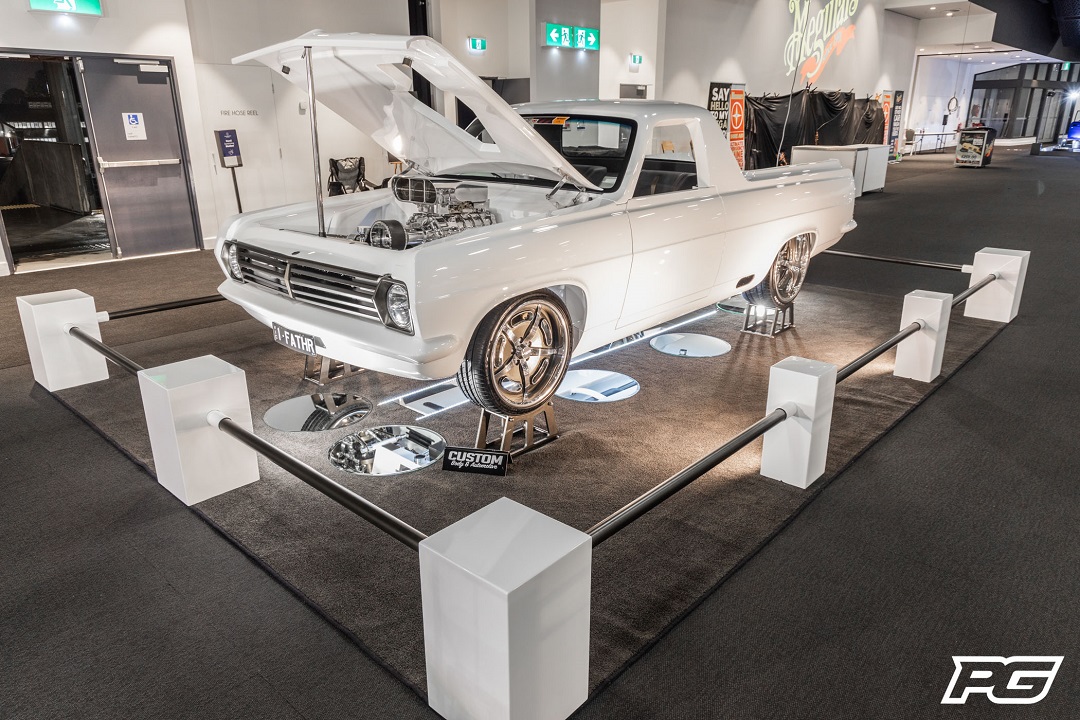
Choosing the Right Perspective and Focal Length
The perspective and focal length you choose can significantly impact the overall look and feel of your interior photographs. Wide-angle lenses, typically between 16mm and 24mm, are often used in interior car photography, as they allow you to capture more of the scene within the confined space of a car's interior.
However, be mindful of distortion when using wide-angle lenses, as they can make some elements appear unnaturally large or stretched. To avoid distortion, use a slightly longer focal length or correct the distortion in post-processing using editing software.
When selecting a perspective, consider shooting from various angles, such as from the driver's seat, the passenger's seat, or through an open door or window. Each angle will provide a different view of the interior, allowing you to showcase different features and create a sense of depth and dimension.
Focusing on Details and Composition
As with exterior car photography, composition and attention to detail are crucial in interior photography. Use compositional techniques, such as the rule of thirds or leading lines, to create visually appealing images. Focus on key details, such as the stitching on the seats, the texture of the dashboard, or the shine of the polished metal trim.
Experiment with depth of field by adjusting your aperture. A shallow depth of field (achieved with a wide aperture, e.g. f/2.8) can help draw attention to a specific feature, while a deeper depth of field (achieved with a narrower aperture, e.g. f/8) can keep more of the interior in focus.
Post-Processing
In post-processing, adjust exposure, colour, and contrast to enhance your interior photographs. Use editing software, such as Adobe Lightroom or Photoshop, to correct any distortion, remove unwanted reflections, or add finishing touches that bring your vision to life.
By following these tips and techniques, you'll be able to capture stunning interior photographs that showcase the unique design, materials, and features of a car, creating a comprehensive and visually appealing representation of the vehicle.
Detail and Macro Shots
Focusing on unique design elements, such as badges, headlights, or intricate wheel patterns, can add depth and variety to your car photography portfolio. Use a macro lens or extension tubes to capture sharp, close-up images, and pay attention to lighting and composition to highlight the details effectively.
Aerial and Drone Photography
Aerial and drone photography have revolutionised car photography, offering unique perspectives and creative opportunities that were once reserved for those with access to helicopters or other expensive equipment. Incorporating drone shots into your car photography portfolio can help you stand out from the competition and showcase vehicles in exciting new ways.
The Benefits of Aerial Perspectives
Aerial photography allows you to capture cars from above, providing a bird's-eye view that showcases the vehicle's design and shape in a way that ground-level shots cannot. This perspective can reveal interesting patterns, lines, and details that may be overlooked from a more traditional angle. Furthermore, aerial shots can provide a sense of scale and context, highlighting the car's relationship with its surroundings and creating a more immersive and engaging visual story.
Choosing the Right Drone
Selecting the right drone for your car photography needs is crucial. Factors to consider include image quality, flight time, stability, and ease of use. For professional-quality images, look for a drone with a high-resolution camera (12MP or higher) and the ability to shoot in RAW format for maximum post-processing flexibility. A gimbal stabilisation system is also essential to ensure smooth, shake-free footage.
Some popular drone models among car photographers include the DJI Phantom 4 Pro, DJI Mavic 2 Pro, and Autel Robotics EVO II. These drones offer a good balance of image quality, stability, and user-friendly features that cater to both beginners and experienced pilots.
Best Practices for Drone Car Photography
To capture stunning aerial car photographs, keep the following best practices in mind:
- Plan your shots: Before launching your drone, consider the angles and compositions you want to achieve. Scout the location in advance and use mapping tools, such as Google Earth, to identify potential vantage points and interesting features.
- Check weather conditions: Weather plays a significant role in drone photography. Aim for a calm day with little wind, as strong gusts can affect your drone's stability and image quality. Additionally, consider the direction and quality of the light to ensure the car and its surroundings are well-lit and visually appealing.
- Follow local regulations: Familiarise yourself with local drone laws and regulations, which may include altitude limits, no-fly zones, and licensing requirements. Always respect the privacy of others and ensure you have permission to fly and photograph in your chosen location.
- Master your drone's settings: Take the time to learn your drone's camera settings, such as shutter speed, aperture, and ISO, to achieve the best possible image quality. Experiment with different settings to find the optimal balance of exposure, depth of field, and motion blur.
- Be mindful of safety: Always prioritise safety when operating a drone. Maintain a clear line of sight with your drone, avoid flying over people or vehicles, and be prepared to take manual control if necessary.
- Experiment with movement: One of the key advantages of drone photography is the ability to capture dynamic, moving shots. Experiment with tracking the car from above or alongside, using your drone's intelligent flight modes, such as ActiveTrack or Follow Me, to create engaging and dramatic imagery.
By incorporating aerial and drone photography into your car photography toolkit, you can elevate your portfolio with unique perspectives, dynamic motion, and captivating compositions that set your work apart from the competition.
Night and Low-Light Photography
Night and low-light photography can add a dramatic and mysterious atmosphere to your car photographs, showcasing vehicles in a completely different way than daylight shots. However, shooting in low-light conditions presents unique challenges, requiring a solid understanding of camera settings and lighting techniques to achieve the best results. The following tips will help you master night and low-light car photography.
Challenges and Techniques for Shooting in Low-Light Conditions
One of the main challenges of night and low-light photography is achieving the correct exposure without introducing excessive noise or motion blur. To overcome this, use a tripod to stabilise your camera and enable longer exposure times without sacrificing sharpness. Additionally, familiarise yourself with your camera's ISO capabilities and select the highest ISO setting that still produces acceptable image quality.
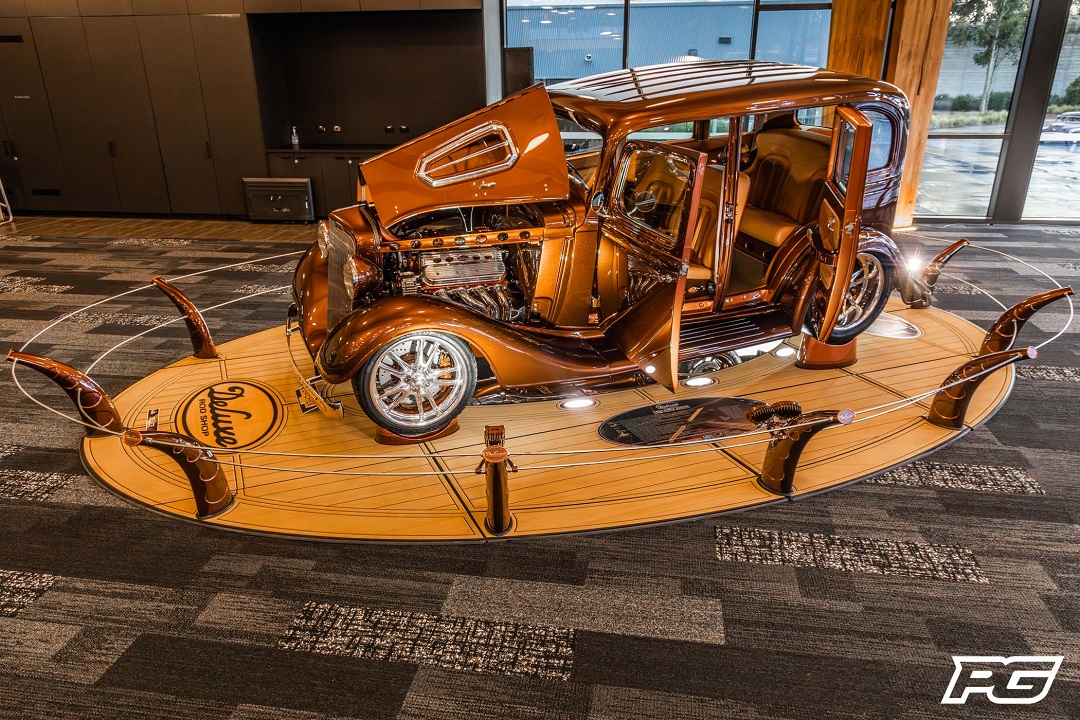
In low-light situations, you'll need to strike a balance between aperture, shutter speed, and ISO to achieve the desired exposure. A wide aperture (e.g., f/2.8) will allow more light to enter the camera, but may result in a shallow depth of field. Slower shutter speeds can also let in more light, but may introduce motion blur if the car or your camera moves during the exposure. Experiment with different settings to find the optimal combination for your specific shooting conditions.
Light Painting and Long Exposures
Light painting is a creative technique often used in night and low-light car photography. This method involves using a handheld light source, such as a flashlight or LED strip, to 'paint' light onto the car and its surroundings during a long exposure. The result is a unique and dramatic image with the car illuminated against a dark background.
To achieve a successful light painting shot, follow these steps:
- Set up your camera on a tripod and compose your shot.
- Set your camera to manual mode and select a long exposure time, typically between 10 and 30 seconds.
- Use a remote shutter release or your camera's self-timer to avoid camera shake when triggering the shutter.
- During the exposure, move around the car, 'painting' light onto it and any desired background elements. Experiment with different light sources and movements to create interesting effects.
- Review your image and adjust your camera settings or light painting technique as necessary.
It may take several attempts to achieve the desired result, so be patient and persistent.
Using Artificial Light Sources
In addition to light painting, you can use artificial light sources to enhance your night and low-light car photographs. Portable flashes, LED panels, or even streetlights can provide targeted illumination and create interesting highlights, shadows, and reflections. Experiment with the positioning, intensity, and colour temperature of your light sources to achieve a balanced and visually appealing image.
Post-Processing and Editing
Post-processing and editing are crucial steps in car photography, allowing you to refine your images, correct imperfections, and bring your creative vision to life. By mastering editing techniques and software, you can elevate your car photographs to a professional level and develop a consistent and recognisable style. The following tips will help you get started with post-processing and editing.
Introduction to Editing Software
There are several editing software options available for photographers, each with its own set of features and capabilities. Adobe Lightroom and Photoshop are among the most popular choices for professionals and enthusiasts alike, offering a comprehensive suite of editing tools and excellent workflow integration.
Lightroom is particularly well-suited to car photography, as it provides a non-destructive editing environment, allowing you to make adjustments without permanently altering the original image file. Photoshop, on the other hand, offers more advanced editing capabilities, such as layer-based editing and pixel-level manipulation, which can be useful for more complex retouching tasks.
Adjusting Exposure, Colour, and Composition
The first step in post-processing is to adjust exposure, ensuring that your images are correctly exposed and free of blown-out highlights or crushed shadows. Use the histogram and adjustment sliders in your editing software to fine-tune exposure, contrast, and brightness.
Next, focus on colour adjustments, which can significantly impact the overall mood and atmosphere of your car photographs. Adjust white balance, saturation, and vibrance to achieve accurate and visually appealing colours. Additionally, consider using colour grading techniques, such as split toning or curves adjustments, to create a unique and consistent look across your images.
Finally, refine your composition by cropping and straightening your images as necessary. Use the rule of thirds or other compositional guidelines to create a strong and balanced visual structure. Also, consider correcting lens distortion, particularly if you've used wide-angle lenses, to ensure your car photographs look natural and proportional.
Retouching and Removing Imperfections
Even the most carefully composed and captured car photographs may require some retouching to remove unwanted imperfections, such as dust spots, reflections, or background distractions. Use tools like the healing brush, clone stamp, or content-aware fill in your editing software to cleanly remove or repair these imperfections.
In addition, retouching can be used to enhance the appearance of the car itself, such as by deepening the shine of the paint, accentuating reflections, or highlighting specific design elements. However, avoid over-retouching, as this can make your images appear unnatural and overly processed.
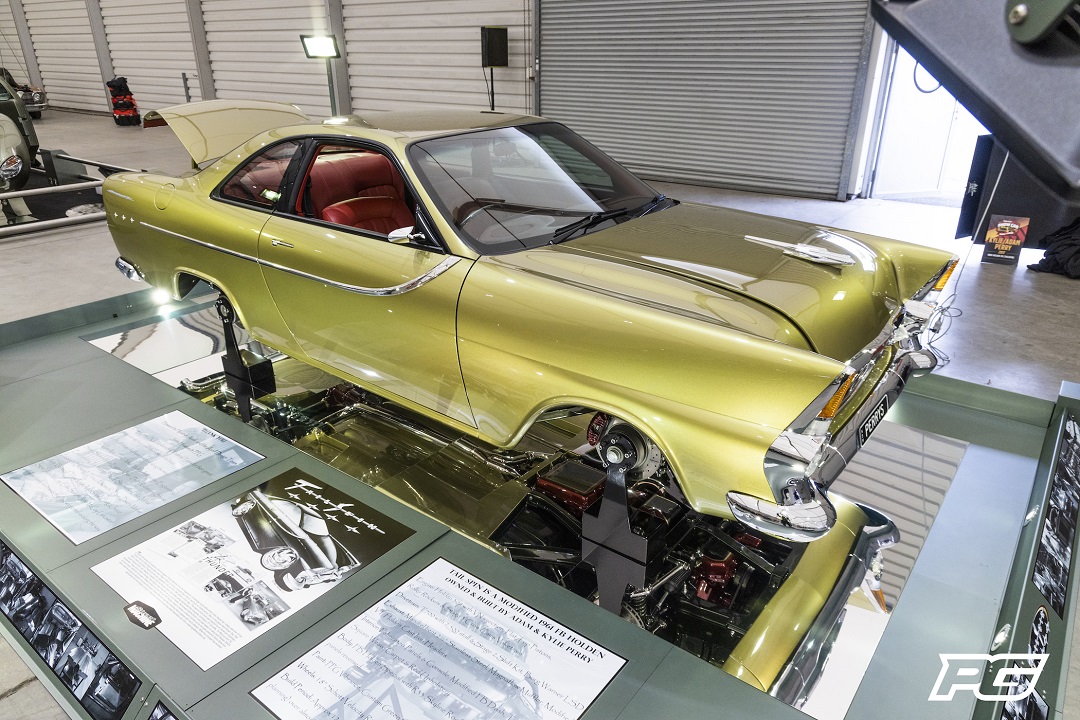
Sharpening and Noise Reduction
To ensure your car photographs look crisp and detailed, apply sharpening and noise reduction techniques in post-processing. Sharpening enhances the contrast between edges and fine details, while noise reduction smooths out any unwanted grain or noise introduced by high ISO settings or long exposures.
Apply these adjustments carefully, as over-sharpening can introduce artefacts or halos, and excessive noise reduction can result in a loss of detail and a 'plastic' appearance.
Saving and Exporting Your Images
Once you're satisfied with your edits, save and export your images in the appropriate format and quality settings for their intended use. For online display, JPEG or PNG formats are typically recommended, while TIFF or PSD formats are better suited for high-quality prints or further editing.
Creating a Cohesive Portfolio
A cohesive and well-curated portfolio is essential for any car photographer looking to showcase their best work, attract clients, and build a recognisable personal brand. By carefully selecting and organising your images, you can create a powerful visual narrative that demonstrates your skills, style, and versatility. The following tips will help you create a compelling car photography portfolio.
Selecting and Curating Your Best Work
The first step in creating a cohesive portfolio is to select your best work. This process involves critically reviewing your images and choosing those that best represent your skills, style, and the types of car photography you enjoy and excel at. Look for images that demonstrate your technical prowess, creativity, and attention to detail. Additionally, consider how well each image fits within the broader context of your portfolio and whether it contributes to a consistent and harmonious presentation.
When curating your portfolio, focus on quality over quantity. It's better to showcase a smaller number of exceptional images than to include a large number of mediocre or repetitive shots. Aim for a balance of variety and cohesion, with a diverse range of subjects, styles, and techniques that still maintain a consistent visual language and aesthetic.
Developing a Unique Style and Personal Brand
One of the key elements of a cohesive portfolio is a distinctive and recognisable style. Your style is the visual signature that sets your work apart from other car photographers and communicates your creative vision and personality. Developing a unique style takes time, practice, and experimentation, so be patient and continually refine your approach as you gain experience and confidence.
Consider the following aspects when developing your style:
- Lighting: Do you prefer natural or artificial lighting? Do you gravitate towards high-contrast, dramatic images or soft, even illumination?
- Composition: What compositional techniques do you enjoy using? Are your images minimalist and clean, or do they feature complex and intricate arrangements?
- Colour palette: Do you prefer bold, saturated colours or a more subdued and muted palette? Do you have a signature colour grading style that creates a consistent look across your images?
- Editing and post-processing: How do you approach retouching and editing? Do your images have a polished, glossy finish, or do they retain a more natural and authentic appearance?
By refining these elements and consistently applying them to your work, you can create a strong personal brand that is easily identifiable and resonates with your target audience.
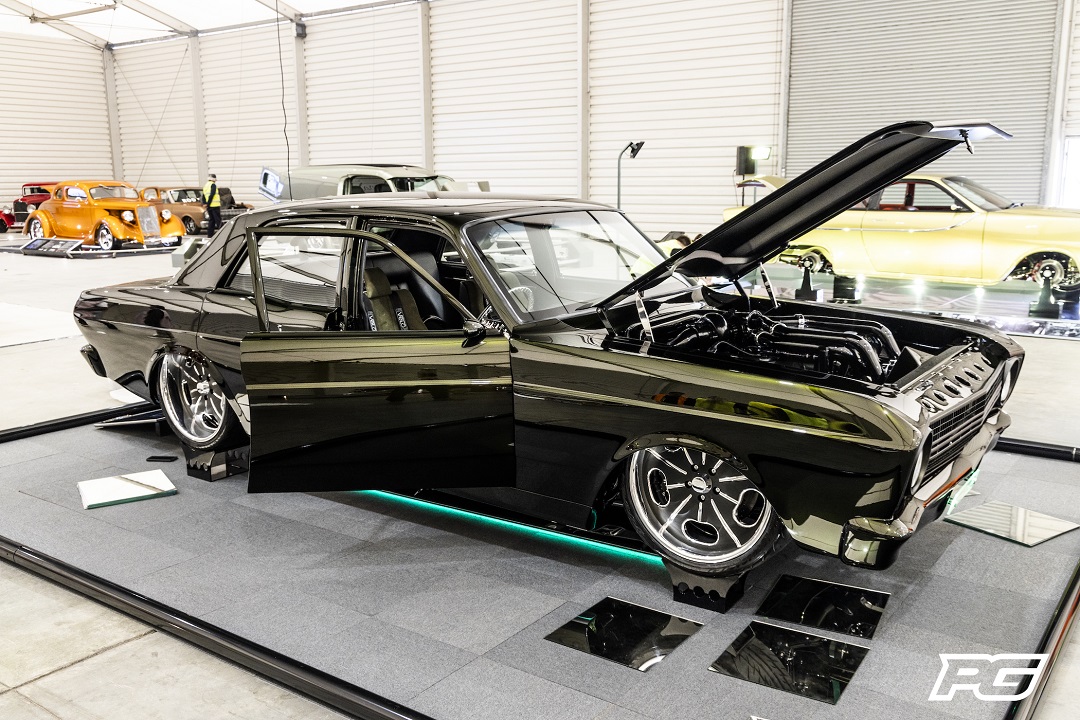
Organising and Presenting Your Portfolio
Once you've selected and curated your best work, organise your portfolio in a way that tells a compelling visual story and highlights your strengths as a car photographer. Consider grouping images by theme, style, or technique, or create separate galleries for different types of car photography, such as motorsports, vintage cars, or concept vehicles.
When presenting your portfolio, whether in print or online, ensure that your images are displayed in a clean, uncluttered layout that allows each image to shine. Use high-resolution files to ensure optimal image quality and consider adding captions or descriptions to provide context and insights into your creative process.
By creating a cohesive, well-curated, and visually engaging car photography portfolio, you can showcase your best work, attract clients and collaborators, and build a strong personal brand that sets you apart from the competition.
Legal Considerations and Permissions
As a car photographer, it's crucial to be aware of the legal considerations and permissions required to protect your work, respect others' rights, and avoid potential disputes or penalties. Understanding copyright, usage rights, and the regulations surrounding photography in public and private spaces will help you navigate the legal landscape with confidence. The following information provides an overview of the key legal considerations for car photographers.
Understanding Copyright and Usage Rights
Copyright is the legal protection granted to creators of original works, including photographers. As the copyright holder, you have the exclusive right to reproduce, distribute, display, and create derivative works from your photographs. This means that others must obtain your permission to use your images for their own purposes, whether for commercial or non-commercial use.
Usage rights are the specific permissions granted by the copyright holder (the photographer) to a client or third party, allowing them to use the images for a specified purpose, duration, or in a particular context. When working with clients, it's important to clearly outline the usage rights granted in your contracts or agreements to avoid misunderstandings and protect your interests.
Acquiring Permits and Respecting Local Regulations
When photographing cars in public spaces or on private property, you may need to obtain permits or permissions from the relevant authorities or property owners. These requirements vary depending on the location and the nature of your shoot (e.g., commercial vs. non-commercial, still photography vs. videography), so it's important to research and comply with local regulations.
Some locations, such as national parks, historic sites, or popular tourist destinations, may have specific rules or restrictions surrounding photography. These may include limitations on the use of tripods, flash, or other equipment, as well as restrictions on the commercial use of images taken in these areas. Familiarise yourself with these rules and obtain any necessary permits or permissions before embarking on your shoot.
Respecting Privacy and Property Rights
When photographing cars, be mindful of privacy and property rights. Avoid capturing images of people without their consent, particularly if they are identifiable and in a private or sensitive setting. Similarly, be respectful of private property and avoid trespassing or photographing someone else's car without their permission.
In some cases, the design or branding elements of a car may be protected by trademark or other intellectual property rights. Be cautious when photographing these elements, particularly if you plan to use the images for commercial purposes, as you may need to obtain permission from the car manufacturer or trademark owner.
Model and Property Releases
When working with models or photographing cars and locations that are privately owned or feature recognisable branding, consider obtaining model and property releases. These releases are legal agreements that grant you permission to use the images for commercial purposes and help protect you against potential claims of invasion of privacy or infringement of intellectual property rights.
The Business of Car Photography
Turning your passion for car photography into a profitable business requires more than just technical skill and creative talent. Success in the competitive world of professional car photography depends on your ability to build a strong client base, market yourself effectively, and develop a sustainable business model. The following tips will help you establish and grow your car photography business.
Building a Client Base
One of the first challenges you'll face as a professional car photographer is building a client base. This involves identifying your target audience, understanding their needs and preferences, and tailoring your services to meet their expectations. Potential clients may include car manufacturers, dealerships, automotive magazines, event organisers, and private car owners.
To attract and retain clients, focus on providing exceptional customer service, delivering high-quality work, and exceeding their expectations. Develop strong relationships with your clients by being responsive, reliable, and professional, and seek feedback to continually improve your services and customer satisfaction.
Marketing and Self-Promotion Strategies
Effective marketing and self-promotion are essential for building your reputation, showcasing your work, and attracting new clients. The following strategies can help you market your car photography business:
- Portfolio: Create a professional, visually engaging, and easily accessible online portfolio that showcases your best work and highlights your unique style and expertise.
- Social Media: Leverage social media platforms, such as Instagram, Facebook, and Twitter, to share your work, engage with your audience, and network with other professionals in the automotive and photography industries.
- Networking: Attend car shows, industry events, and photography workshops to connect with potential clients, collaborators, and mentors. Join online forums, groups, and communities to share your work, learn from others, and establish your presence in the car photography scene.
- Business Cards and Promotional Materials: Design eye-catching business cards, flyers, and other promotional materials that represent your brand and provide your contact information. Distribute these materials at events, exhibitions, and to potential clients.
- Search Engine Optimisation (SEO): Optimise your website and online portfolio for search engines, using relevant keywords, quality content, and user-friendly navigation to increase your visibility and attract organic traffic.
- Collaborations and Partnerships: Partner with other professionals, such as car detailers, event organisers, or automotive journalists, to expand your network and gain exposure to new clients and opportunities.
Pricing and Packages
Developing a pricing structure and offering packages tailored to the needs of your clients is an important aspect of running a successful car photography business. Consider the following factors when determining your pricing:
- Costs: Calculate your expenses, such as equipment, travel, insurance, and post-processing, and factor these into your pricing to ensure you cover your costs and generate a profit.
- Market Rates: Research the going rates for car photography in your area and industry, and price your services competitively to attract clients while still valuing your work and expertise.
- Experience and Skill Level: Consider your experience, skill level, and unique selling points when pricing your services. As you gain more experience and improve your skills, you may be able to command higher fees.
- Packages: Offer a range of packages and customisable services to cater to the diverse needs and budgets of your clients. For example, you could offer basic, standard, and premium packages, each with different levels of service, image quantity, and post-processing.
Managing Your Business
Running a successful car photography business involves managing various administrative tasks, such as invoicing, bookkeeping, and contract management. Stay organised and efficient by using project management tools, accounting software, and contract templates to streamline your processes and ensure your business runs smoothly.
Additionally, consider investing in business insurance, such as professional liability and equipment coverage, to protectyourself and your assets against potential risks and losses. Having the appropriate insurance coverage can provide peace of mind and safeguard your business in case of accidents, damages, or legal disputes.
Continuous Learning and Professional Development
The automotive and photography industries are constantly evolving, so it's essential to stay informed about the latest trends, technologies, and techniques. Invest in your professional development by attending workshops, conferences, and online courses to enhance your skills, learn from industry experts, and stay ahead of the competition. Embrace new technology, such as drones or advanced editing software, to expand your capabilities and offer innovative services to your clients.
Diversifying Your Income Streams
To create a sustainable and profitable car photography business, consider diversifying your income streams by offering a range of services and products. In addition to your primary car photography services, you could explore related niches, such as motorsports, classic cars, or automotive journalism, to broaden your client base and increase your earning potential. You might also consider selling prints, merchandise, or licensing your images for stock photography to generate passive income.
In summary, establishing and growing a successful car photography business requires a combination of technical skill, creative talent, and business acumen. By building a strong client base, marketing yourself effectively, developing a sustainable business model, and continuously learning and adapting to industry trends, you can turn your passion for car photography into a rewarding and profitable career.
Tips from Professional Car Photographers
Learning from the experiences and insights of professional car photographers can help you hone your skills, avoid common pitfalls, and accelerate your success in the competitive world of automotive photography. The following tips, gathered from industry experts, provide valuable guidance for aspiring car photographers.
1. Develop Your Unique Style
Standing out in the crowded field of car photography requires developing a unique style that distinguishes your work from the competition. Experiment with different techniques, angles, and lighting setups to find your creative voice and signature style. Continuously refine and evolve your style to keep your work fresh and engaging.
2. Master the Fundamentals
While it's important to develop your own style, it's equally important to have a strong foundation in the fundamentals of photography. Understand and master the basic concepts, such as exposure, aperture, shutter speed, and ISO, as well as composition techniques and lighting principles. This knowledge will provide you with the technical skills and confidence to execute your creative vision.
3. Be Patient and Persistent
Capturing the perfect shot often requires patience and persistence. Be prepared to spend time waiting for the right lighting conditions, scouting the perfect location, or experimenting with different angles and compositions. Embrace the process and don't be discouraged by initial setbacks or challenges.
4. Network and Collaborate
Building relationships with other professionals in the automotive and photography industries can open doors to new opportunities, collaborations, and learning experiences. Attend car shows, industry events, and photography workshops to network with potential clients, collaborators, and mentors. Join online forums, groups, and communities to share your work, learn from others, and establish your presence in the car photography scene.
5. Prioritise Safety
Car photography often involves working in close proximity to moving vehicles, so prioritising safety is essential. Be aware of your surroundings, communicate with drivers and team members, and take necessary precautions to protect yourself and others during shoots.
6. Invest in Quality Equipment
While skill and creativity are crucial to capturing stunning car photographs, investing in quality equipment can significantly enhance your results. Invest in a reliable camera, a range of lenses suited to car photography, and essential accessories like tripods, filters, and external flashes. As your skills and business grow, consider upgrading your gear to stay competitive and deliver the best possible results to your clients.
7. Embrace Post-Processing
Post-processing is an essential part of creating professional-quality car photographs. Develop your editing skills and learn to use software like Adobe Lightroom and Photoshop to enhance your images, correct imperfections, and bring your creative vision to life. Remember, however, that post-processing should complement, not replace, good photography technique.
8. Stay Updated on Industry Trends
The automotive and photography industries are constantly evolving, with new trends, technologies, and techniques emerging regularly. Stay informed about the latest developments by reading industry publications, following influential photographers and car enthusiasts, and attending workshops and conferences.
9. Be Professional and Reliable
To succeed as a professional car photographer, it's essential to be professional and reliable in all aspects of your work. Deliver high-quality results, meet deadlines, communicate effectively with clients, and be prepared to go the extra mile to exceed their expectations.
10. Continuously Learn and Grow
Never stop learning and growing as a photographer. Seek feedback from peers and clients, learn from your mistakes, and continuously strive to improve your skills and knowledge. By maintaining a growth mindset and embracing new challenges, you'll stay motivated, inspired, and ready to tackle the ever-changing world of car photography.
Exploring Different Genres of Car Photography
Car photography offers a wide range of specialisations and niches to explore. Here are a few popular genres of car photography to consider.
Motorsports and Action Photography
Capture high-speed vehicles in motion, often in the context of racing events, rallies, or track days. This genre requires technical skill, quick reflexes, and an eye for capturing the drama and excitement of high-speed driving. Techniques such as panning shots, freeze motion, and motion blur can be used to create dynamic and engaging images.
Vintage and Classic Car Photography
Capture the beauty, elegance, and character of vintage and classic cars, often in evocative and nostalgic settings. This genre requires a keen eye for detail, lighting, and composition, as well as an appreciation for the history and aesthetics of classic cars. Techniques such as shallow depth of field and warm, vintage-inspired colour grading can be used to create a timeless and romantic look.
Concept and Prototype Car Photography
Capture the cutting-edge designs and futuristic features of concept cars and prototypes. This genre requires an understanding of automotive design and engineering, as well as an ability to showcase the unique features and potential of these innovative vehicles. Techniques such as low-angle shots and dramatic lighting can be used to emphasise the futuristic and otherworldly nature of these vehicles.
Commercial Car Photography
Create images for advertising and promotional purposes, often for car manufacturers, dealerships, and related industries. This genre requires a strong understanding of branding, marketing, and client needs, as well as technical skill in executing complex and high-quality images. Techniques such as studio lighting, composite images, and extensive post-processing can be used to create polished and professional images that convey a specific message or narrative.
Lifestyle Car Photography
Capture the intersection of cars and everyday life, often in aspirational or lifestyle-oriented settings. This genre requires an understanding of contemporary culture and trends, as well as an ability to showcase cars in a relatable and aspirational context. Techniques such as environmental portraiture, candid moments, and natural lighting can be used to create engaging and authentic images that resonate with viewers.
Detail and Macro Car Photography
Capture the intricate and unique design elements of cars, often in extreme close-up. This genre requires technical skill in macro photography, as well as an eye for detail and appreciation for the craftsmanship and artistry of car design. Techniques such as focus stacking, macro lenses, and advanced lighting setups can be used to create stunning and abstract images that highlight the beauty and complexity of car design.
Interior Car Photography
Capture the details, craftsmanship, and atmosphere of the car's interior, often in the context of showcasing luxury or high-end vehicles. This genre requires an eye for detail, lighting, and composition, as well as an understanding of the unique challenges of interior photography. Techniques such as natural and artificial lighting, wide-angle lenses, and HDR imaging can be used to create immersive and aspirational images that transport viewers into the driver's seat.
The Future of Car Photography
Emerging trends and technologies will continue to shape the future of car photography. As the automotive landscape evolves, with electric and autonomous vehicles gaining prominence, car photographers must adapt their techniques and approach to stay relevant and innovative.
Car photography is a dynamic and rewarding field that combines artistic expression, technical skills, and a passion for automobiles. By mastering the fundamentals, investing in the right equipment, and continuously learning and experimenting with new techniques, you can create stunning car images that stand out in the competitive world of automotive photography.
Comments
No posts found










